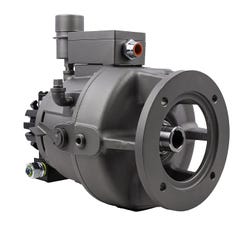Is There Another Factory Hiding Within Your Factory?
Manufacturers can expand the capacity of their factories by improving machine health.
July 21, 2022

The supply chain crisis has reinforced the importance of onshoring. Yet it takes years for new factories in North America to become fully operational. “Shadow factories” can contribute to the onshoring solution by increasing production output without the lengthy process of breaking ground on a new plant.
The shadow factory is unused capacity within an existing factory. It might be the third shift in a plant that is only running two shifts. Or it may be the reduction of machine downtime that comes from increasing the health of machines and thus avoiding costly interruptions.
According to Augury CEO Saar Yoskovitz, the use of the shadow factory recently saved Pepsi more than a million pounds of snacks when machines were maintained in advance of failures. The equipment corrections translated into four months of increased production capacity.
Boosting US Production by Improving Machine Health
Improving the health of equipment can directly result in a greater capacity. “We increased the capacity of a Pepsi plant by increasing four months of finished products,” said Yoskovitz. “Those gains accumulated to 12 months of products. Pepsi was able to avoid building a new factory. When sensors and alarms were added to the machines, capacity was increased to two full factories.”
Making the plant more efficient can help manufacturers avoid building new plants. “Manufacturers haven’t been using all of their capacity. Once they improve throughput and reduce downtime, they get increased capacity. Yesterday, they didn’t have the capacity, and now they do,” said Yoskovitz. “If you have to stop the line twice a week, you have unused capacity. If you can avoid machine failure, and you can keep the machine running – that’s increased compacity.”
Monitoring machine health can result in greater uptime. “When you shift from scheduled maintenance to condition-based maintenance, you reduce planned downtime,” said Yoskovitz “You go to the garage with your car and replace the oil. Why? Because the OEM said it needs to be replaced. If you check the oil, you may find that it doesn't need to be replaced for another year. That approach to plant maintenance can result in huge savings at factories.”
Using Equipment Less Likely to Break
During work shortages, maintenance and operations departments are among the hardest hit. To help alleviate this issue, developed maintenance-free, no-adjustment brakes. These brakes are designed to reduce some of the impact of worker shortages by making maintenance less critical. Unlike dry braking systems, these brakes operate accurately with precise repeatability for millions of cycles with virtually no maintenance or adjustment. Low maintenance measures are becoming a selling point among equipment manufacturers.

Work stoppage for routine maintenance is not a trivial interruption at most plants. “A company has an extruder and every nine months they take the machine down and rebuild it, it takes a week,” said Yoskovitz. “At one factory, we looked at an extruder before they took it apart and it was in acceptable condition. We spend millions on spare parts and downtime – capacity – and ask, ‘Why don’t we delay it? We can take more risks when we know the condition of the equipment.’”
Completing maintenance on equipment that doesn’t need to be serviced can become costly. “We work with the largest manufacturing companies to make production more reliable and productive. We learned there are supply chain risk management issues that arise when unnecessary maintenance is completed on healthy equipment,” said Yoskovitz. “Shutdowns to do maintenance on equipment that is healthy can cost tens of millions of dollars. That lost capacity is what we call the shadow factory.”
About the Author(s)
You May Also Like


.jpg?width=300&auto=webp&quality=80&disable=upscale)


